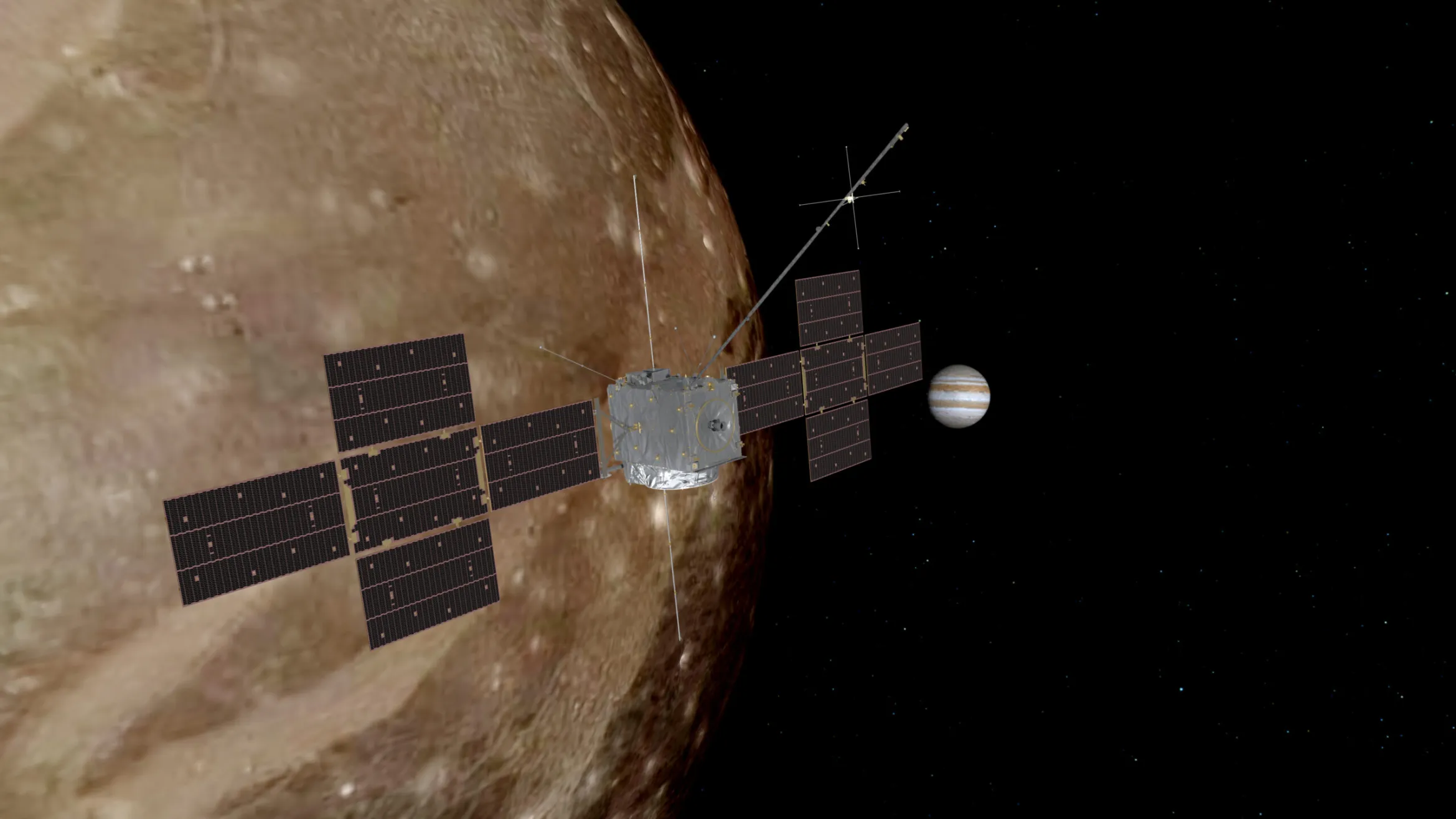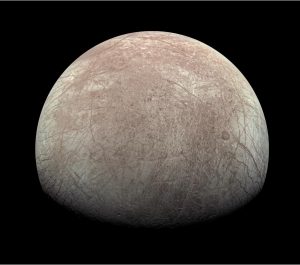
Global Space News: JUICE is preparing to launch!
On April 13 2023, the Jupiter Icy Moons Explorer (JUICE) mission is scheduled to launch from the European Spaceport in Kourou, French Guiana. The ESA-led mission is packed with eleven science instruments for exploring the Jovian ice-covered moons, four of which have been partially developed here in Japan, and Japanese researchers are part of the science teams on a further two instruments.
It has been about ten years since the Japanese group first participated in the JUICE mission. Eleven science instruments are onboard JUICE, and the Japanese group is participating by providing part of the instrument for four of them; RPWI, GALA, PEP/JNA and SWI. The Japanese group is also participating as a science member in two instruments, JANUS and J-MAG. The instruments provided by Japan, together with those developed in Europe, were installed on the JUICE satellite and transported to Kourou, to be ready for the launch in April. After ten years of preparation and development, our instruments will leave for a place no one has ever visited, Jupiter’s icy moon Ganymede. Just like before embarking on a journey, we are a little bit anxious, but filled with excitement. The JUICE mission is scheduled to continue for another ten years or so. Stay tuned to JUICE!
Saito Yoshifumi, Project Manager for JUICE-JAPAN
Jupiter has three icy moons, Europa, Ganymede and Callisto, whose surfaces appear to consist of a solid ice shell with a suspected deep liquid water ocean beneath. The presence of water makes the moons intriguing prospects for a possible habitable environment, albeit one extremely different from Earth. JUICE will examine the three moons themselves and the environment surrounding Jupiter to understand conditions that exist both in the moons’ surface and within their watery interior. A particular focus for JUICE is the middle of the three icy satellites, Ganymede. Unlike Europa or Callisto, Ganymede generates its own magnetic field which interacts with the engulfing magnetosphere emanating from Jupiter.
Ganymede has an intrinsic magnetic field, creating its own magnetic force field within Jupiter’s stronger and larger magnetic force field. When plasma particles moving under the influence of the moon’s magnetic field strike the surface of Ganymede, energetic neutral particles are ejected. These can be detected by our PEP/JNA instrument onboard JUICE, and help us understand how being embedded in Jupiter’s magnetic environment affects Ganymede’s plasma environment. I’m really looking forward to seeing the observations PEP/JNA will make!
Asamura Kazushi, CO-I of PEP
JUICE will make fly-by observations of Europa, Callisto and Ganymede, and then begin to orbit around Ganymede. The GALA instrument onboard JUICE is one that will be able to probe information about the ocean below the moon’s frozen surface.
We, the GALA-Japan team, are developing the Ganymede Laser Altimeter (GALA) for JUICE by an international collaboration between Germany (led), Japan, Switzerland, and Spain. GALA’s main scientific targets for the icy moons, in particular Ganymede, are the following:
- Icy-surface geographical features.
- Subsurface ocean of liquid water. (It has been pointed out that Ganymede may have a subsurface ocean.)
To reveal these, GALA will perform continual distance measurements to the surface of Ganymede with high precision (scanning and monitoring Ganymede with the distance measurement). As a result, a 3D map of Ganymede will be acquired, and the presence or absence of small tidal deformation to the overall shape of Ganymede, etc., will be examined. GALA is the world’s first laser altimeter to be applied to an icy body. GALA is also the first and unique opportunity to use the tidal deformation of an entire celestial body to approach the subsurface ocean.
Enya Keigo, Project Manager for JUICE/GALA-Japan
The journey to Jupiter is a long one, and JUICE is not expected to arrive in the system until 2031. After arrival, the spacecraft plans to make multiple fly-bys of the moons before entering Ganymede’s orbit in 2034 and becoming the first mission to orbit an icy moon. In up-coming posts on Cosmos, we will take a look at several of the other instruments developed here in Japan for JUICE’s exploration!
“Global space news” is a chance for us to highlight important developments across the world and share our excitement of these achievements.
Further Information:



 Previous Post
Previous Post Next Post
Next Post






